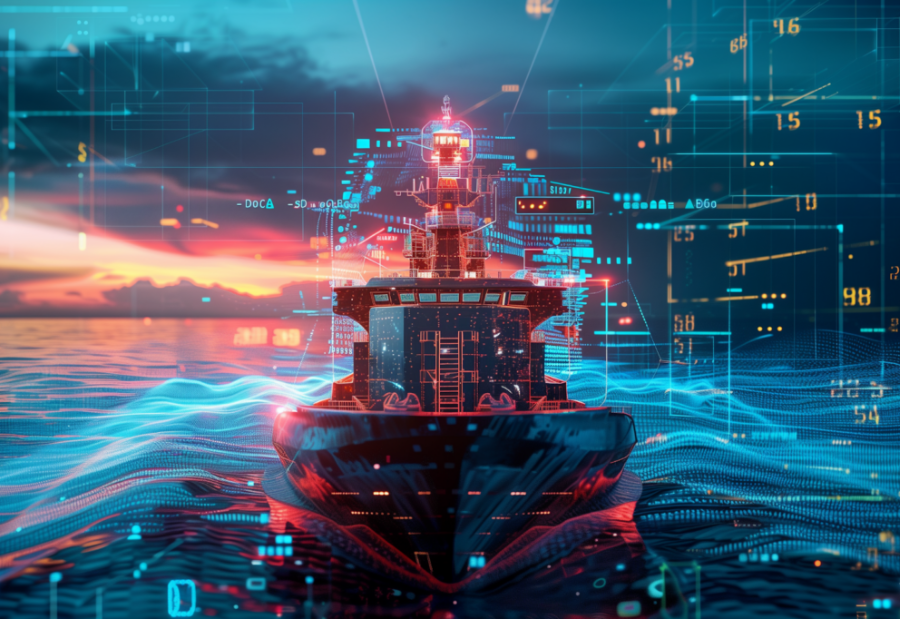High-value assets, like Navy aircraft carriers, need escorts while approaching or leaving congested harbors to guarantee safe passage. Charles River Analytics’ Perception Autonomy for Vessel Escorts (PAVE) solution automates the procedure to lower the number of personnel needed and boost mission speed.
The Naval Sea Systems Command has recently awarded the corporation a $1.8 million Small Business Innovation Research (SBIR) Phase II contract.
Although PAVE is not the first of its sort, existing vision software for uncrewed surface boats (USVs) cannot precisely follow tiny or relatively fast-moving vehicles, especially in busy harbor situations. Charles River Analytics claims that they are likewise unable to adequately describe these possible dangers.
PAVE expands upon Charles River Analytics’ AI-powered autonomous lookout system, Awarion®, which supports and enhances maritime radar systems and human watchstanders on open waters.
“Awarion detects, analyzes, and reports on the presence of whales, vessels, and other maritime objects in the open ocean, but we can adapt it to perform well in more crowded harbor scenarios,” says Ross Eaton, Principal Scientist, Director of Marine Systems, and Awarion product lead at Charles River.
“With PAVE, we can not only understand what and where something is, but we can also make inferences about what that other boat might be doing so we can alert the appropriate personnel as needed,” Eaton says, referring to the improvement of Awarion. PAVE will also be able to determine how far away the different items it senses are.
There is typically a lot going on in both the foreground and the background of a bustling waterfront. Although people can tell buildings and boats apart with ease, algorithms may become confused by the volume of signals. One of the main issues PAVE is trying to solve is computer vision that achieves human-like perception.
For this reason, Phase II will concentrate on providing PAVE with a larger collection of harbor-specific learning data, including new categories like piers and buildings, after Phase I’s successful demonstration of the system’s viability. “We’re launching a more concerted effort to collect additional data that has more crowded backgrounds and congested scenes,” Eaton says.
PAVE can “see” objects day or night using electro-optical (EO) and infrared (IR) detecting technologies. “Instead of having different people on different boats with all of them having only a partial view of the world, we’re building a cohesive picture, which will alert and issue warnings when something deserves a closer look. It makes the response more coordinated and faster. We want to leverage the strength of the human and automation to make an overall system that is as efficient as possible,” Eaton says.
Charles River anticipates that the Maritime Expeditionary Security Force (MESF), which is working to improve its uncrewed escort capabilities, will benefit immediately from the full-scope PAVE-enabled smart camera.
Eaton claims the US Navy and the private sector have been quite enthusiastic about the device. Smaller USV platforms with PAVE integrated for a range of harbor activities are among the commercialization opportunities.
Also read: Viksit Workforce for a Viksit Bharat
Do Follow: The Mainstream formerly known as CIO News LinkedIn Account | The Mainstream formerly known as CIO News Facebook | The Mainstream formerly known as CIO News Youtube | The Mainstream formerly known as CIO News Twitter |The Mainstream formerly known as CIO News Whatsapp Channel | The Mainstream formerly known as CIO News Instagram
About us:
The Mainstream formerly known as CIO News is a premier platform dedicated to delivering latest news, updates, and insights from the tech industry. With its strong foundation of intellectual property and thought leadership, the platform is well-positioned to stay ahead of the curve and lead conversations about how technology shapes our world. From its early days as CIO News to its rebranding as The Mainstream on November 28, 2024, it has been expanding its global reach, targeting key markets in the Middle East & Africa, ASEAN, the USA, and the UK. The Mainstream is a vision to put technology at the center of every conversation, inspiring professionals and organizations to embrace the future of tech.




